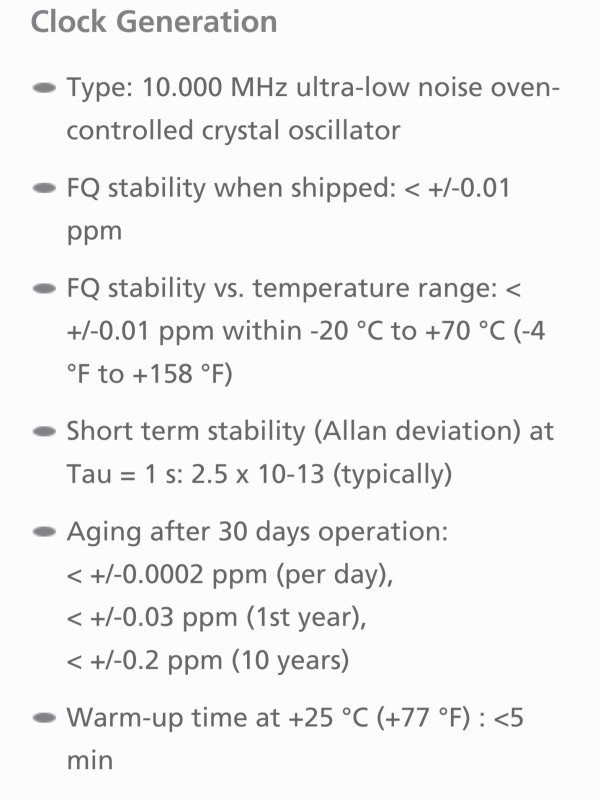I think I naively omitted basic architecture details that I thought people would pick up on or already were already familiar with. In my previous post I was talking about 10Mhz clocks, most circuitry does not use this frequency natively at all. USB generally uses a multiple of 24Mhz, Ethernet a multiple of 25Mhz, DVD based transports 27Mhz, CD players 11.2896Mhz, DACs and ADCs 24.576Mhz and 22.5792Mhz. So 10Mhz must be translated to “something else…” That translation is the problem addressed in my last post. The second detail is that all of our DACs, and the majority of high quality DACs, change their operational frequency based on the sample rate of the media. For example a 22.5792Mhz clock is used for 44.1Khz media and a 24.576Mhz clock is used for 96Khz media. If your external clock does not have two frequencies available then the receiving product must translate the clock or asynchronously sample rate convert the data, with all of the loss that translation entails. That translation is a more expensive, and a lower performance option than simply using a cheap jellybean crystal oscillators in the first place. Your external, ultra stable, super low jitter external clock is cut off at the knees by the clock conversion circuitry and is therefore irrelevant to performance of the product in question. In our DACs the oscillator is a dual frequency oscillator and it directly clocks the DACs, there is no translation. That clock is also sent back to the processors and back to the transport, renderer, USB, etc. In the case of the Cascade DAC it is sent back over fiber for use in the Digital Director, no translation necessary. The unused oscillator is also turned off to prevent coupling to the active oscillator. So if your DAC had an interface that sent the clock signal directly into the converters without any translation, and also had a control interface to select the correct operating frequency for the media being decoded then you would “only” have the loss incurred in the cabling and reception circuitry. However it would still be advantageous to put that same clock closer to the converters with less cabling and interference. In the case of a transport or other digital source the best option is to synchronize it with the DACs clock. This is optimally done by sending the DACs clock back to the transport. The industry standard for this is a “Word Clock” (a square wave at either 44.1Khz or 48Khz depending on the media). Our ProISL uses a more directly useful clock feedback frequency that is used to clock the data interface directly which results in even lower jitter and interference.

teacusa.com














